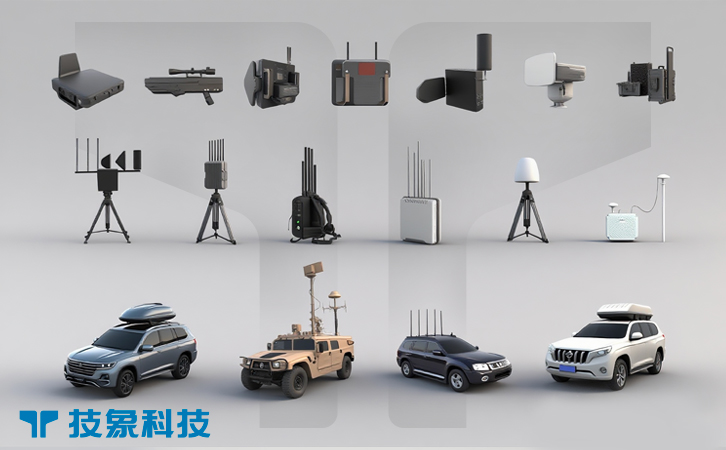The drone explosion in 2025, with over 6 million unmanned aerial vehicles (UAVs) in global circulation, has amplified threats, as rogue drones rely on GPS for navigation to infiltrate restricted zones for surveillance, smuggling, or attacks. GPS denial systems, which disrupt or spoof satellite navigation signals to disorient drones, have emerged as a critical counter-drone technology. These systems create zones where drones lose positional accuracy, forcing them to land, hover, or return home, ideal for protecting airports, military bases, or sensitive events. Unlike RF jammers that risk broad interference or kinetic methods that produce debris, GPS denial offers targeted, non-physical disruption with minimal collateral impact. This article explores the navigational drone threat, the mechanics of GPS denial systems, their real-world applications, and the challenges and future potential of this strategic counter-UAV solution.
I. The Navigational Drone Threat and Need for GPS Denial
Rogue drones increasingly exploit GPS navigation for precision attacks or loitering, with over 2,500 incidents reported globally in 2024, including disruptions at airports and critical infrastructure, costing millions in delays and security responses. In military contexts like Ukraine, GPS-guided UAVs—some costing under $5,000—conduct swarm operations, evading traditional defenses. Civilian risks include smuggling drones using navigation to bypass border controls or drones filming events with pinpoint accuracy.
Conventional countermeasures like RF jamming fail against drones with redundant navigation, while lasers require line-of-sight and clear weather. GPS denial systems address this by disrupting satellite signals, effective even against semi-autonomous UAVs. Their role is pivotal in creating no-fly zones, as seen in 2025 U.S. tests where denial systems grounded intruding drones near bases. The DEFENSE Act, enacted in September 2025, supports navigation disruption for civilian sites, highlighting GPS denial’s importance in countering the precision and persistence of drone threats through strategic disorientation.
II. Mechanics of GPS Denial Systems
GPS denial systems operate in two modes: jamming, which floods GPS frequencies (1.2-1.5 GHz) to block signals, and spoofing, which transmits false coordinates to mislead drones. Jamming systems, like InfiniDome’s GPSdome, emit low-power interference to create a denial bubble up to 1 km, causing drones to lose lock and trigger fail-safes like landing. Spoofing systems, such as Regulus Cyber’s Ring, inject fake GPS data, redirecting drones to safe zones. Both integrate with RF or radar for detection, ensuring targeted effects.
The process involves identifying drone signals, then activating denial or spoofing via directional antennas to minimize collateral impact on civilian GPS. AI optimizes signal manipulation, adapting to drone types in real-time. Advantages include effectiveness against GPS-reliant UAVs, low debris risk, and compact designs (under 10 kg for portables). Limitations include inefficacy against inertial navigation systems and potential interference with nearby devices. In 2025, advancements in selective spoofing and AI-driven signal analysis have enhanced precision, making GPS denial a key component of layered C-UAS strategies.
III. Applications and Real-World Deployments
GPS denial systems are deployed in civilian and military contexts, disrupting navigation to neutralize threats. In civilian applications, airports like Singapore Changi use GPSdome to create denial zones, grounding unauthorized drones without affecting aviation systems, as tested in 2025 trials. Events like the 2025 G7 Summit employed spoofers to redirect filming UAVs to safe areas, ensuring privacy. Critical infrastructure, such as U.S. data centers, uses denial to prevent espionage, reducing incidents by 25% since 2024.
In military applications, GPS denial protects bases and convoys. The U.S. Army’s 2025 Indo-Pacific exercises used spoofing to mislead enemy drones into capture zones, preserving assets. Border operations, like those by EU forces, deploy denial systems to disrupt smuggling UAVs, enabling recovery for analysis. The Counter UAS Technology USA Conference in December 2025 showcased these, emphasizing portable denial units for layered defense. Success relies on integration with detection and operator training, but their navigational disruption makes them indispensable for precision defense.
IV. Challenges and Future Prospects
GPS denial systems face technical, regulatory, and ethical challenges. Inertial or vision-based navigation in advanced drones bypasses GPS reliance, requiring hybrid countermeasures. Collateral interference risks disrupting civilian GPS, like navigation apps, necessitating precise targeting. Costs start at $20,000 for basic units, escalating for spoofing-capable systems.
Regulatory hurdles include FCC bans on GPS interference, though the September 2025 DEFENSE Act provides security exemptions. Ethical concerns involve disrupting legitimate navigation systems, demanding strict protocols under ITU guidelines. Future prospects are strong, with 2025 innovations in AI-driven spoofing and low-power jammers improving selectivity. By 2030, the counter-UAS market is expected to grow, with GPS denial leading for navigational defense. Policy support ensures ethical use, positioning these systems as a cornerstone of strategic aerial security.
Conclusion
GPS denial systems disrupt rogue drone navigation, providing targeted, non-kinetic defense in 2025’s GPS-reliant threats. Their ability to disorient or redirect UAVs makes them ideal for airports, events, and military operations, complementing other C-UAS tools. Despite challenges like advanced navigation and regulations, real-world successes and emerging innovations highlight their potential. As drone threats evolve, GPS denial—supported by policy reforms—will remain vital in layered defenses. By overcoming hurdles, stakeholders can leverage this technology to secure airspaces, ensuring control and safety in a drone-dominated world.



